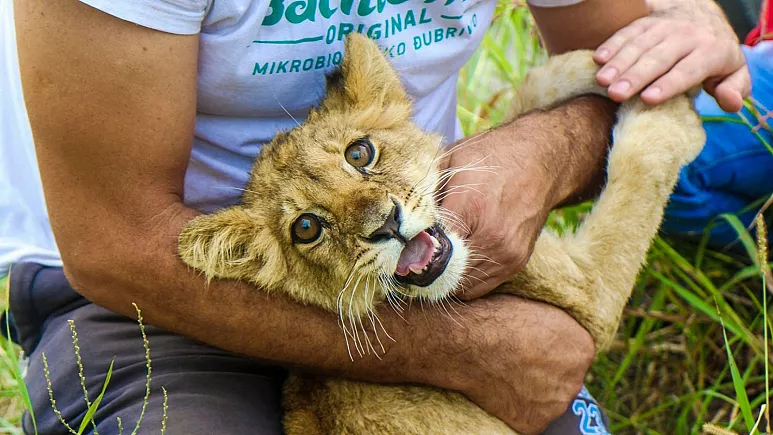In a captivating incident, a lion cub, only a few months old, was recently rescued near Subotica, a town bordering Hungary, shedding light on the shadowy world of wildlife smuggling in the Balkans.
Discovered malnourished and wandering on a local road, the cub was swiftly transported to the Palic Zoo in northern Serbia after a vigilant resident alerted the police.
The enigma surrounding the cub’s origins and the prevalence of animal trafficking in the region adds a layer of intrigue to this wildlife rescue.
As the rescued cub recuperates, the incident underscores the urgency of addressing the broader issue of illegal wildlife trade.

In a poignant revelation, reports have surfaced detailing the discovery of a malnourished lion cub near Subotica, Serbia. Despite its weakened state, the cub exhibited an unexpectedly friendly demeanor, capturing the attention of both a compassionate policeman and local residents, as documented in videos and photos where they can be seen gently caressing the vulnerable animal.
The Lion’s Struggle and Treatment:
Sonja Mandic from the Palic Zoo reported that the lion cub, found in a notably poor condition, is now undergoing essential treatment and infusion to improve its health. Mandic indicated uncertainty about the cub’s exact age, suggesting the possibility of malnourishment and underdevelopment.
A Deeper Look into Wildlife Smuggling:
While official statements from the police are awaited, the incident raises concerns about the prevalence of wildlife smuggling in the Balkan region. Reports from last year’s WWF wildlife crime assessment highlighted the targeted smuggling of locally protected species, including brown bears and forest turtles, along with the illegal possession of exotic snakes like pythons.
In a broader context, an investigative report from 2020 revealed the pervasive nature of illegal wildlife trade in Eastern Europe. This underscores growing worries among conservationists that smugglers exploit regions with less stringent law enforcement, evading scrutiny and perpetuating the illicit wildlife trade.
Conclusion:
The plight of this lion cub serves as a stark reminder of the challenges faced by wildlife in the face of illicit trafficking. It emphasizes the urgent need for coordinated efforts to combat wildlife smuggling, protect endangered species, and strengthen law enforcement in regions susceptible to exploitation by wildlife criminals.
